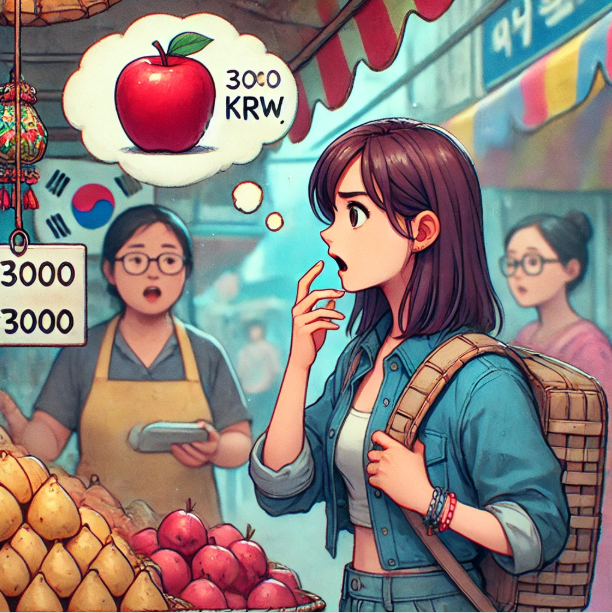Are Fruits Really Expensive in South Korea?
When I first arrived in South Korea, one of the things that immediately caught my attention was the price of fruits. As a person who grew up in India, where fresh fruits are a dime a dozen, I was in for a bit of a shock. Fruits in South Korea seemed to carry a hefty price tag, and I couldn’t help but wonder, “Why are fruits so expensive here?”
To put things into perspective, a bunch of bananas could cost upwards of 5,000 KRW ($4 USD), and a watermelon could easily set you back by 20,000 KRW ($15 USD). These prices left me scratching my head. Was it the result of an extravagant lifestyle, or was there more to the story?
The Taste of Luxury
One of the first fruits I tried here was the infamous Cheongcho watermelon – a luxury variety with a beautiful red interior and perfectly crisp texture. It was so sweet that it felt like a dessert. But when I checked the price at the local supermarket, I almost dropped it. The cost was 20,000 KRW for a medium-sized watermelon!
In South Korea, there’s a deep cultural connection to food, and fruits are often viewed as a symbol of generosity and affection. When Koreans give gifts, fruits, especially premium ones, are often part of the gift set. This culture of giving, especially during holidays or special occasions, adds an air of prestige to fruits. It’s not unusual for high-quality fruits to be packaged like precious gems, neatly wrapped in cellophane and carefully placed in a box.
The Seasons and the Imported Goods
Another factor that affects fruit prices is seasonality. South Korea experiences all four seasons in their full glory, and many fruits are highly seasonal. For instance, during the summer months, fruits like peaches and plums are abundant, but their prices can still be higher compared to the fruits that are grown in colder months. The supply of fruits like mangoes or grapes, which are typically grown in tropical climates, is limited, so they’re often imported from countries like the Philippines, Vietnam, and China.
This brings me to a surprising realization – it’s not that fruits are inherently expensive, but rather that imported varieties come with a premium price tag. And then there’s the cost of transportation, storage, and distribution. Imported fruits, especially exotic ones like pineapples, avocados, and cherries, tend to cost a lot more in South Korea because of these added logistics.
Local Fruits Are Still Affordable
While some fruits, particularly the exotic and imported ones, might seem overpriced, locally grown fruits like apples, pears, and persimmons can be much more affordable. In fact, South Korea produces a wide variety of high-quality fruits that are available at reasonable prices if you’re willing to shop locally. Visiting local farmers' markets or smaller grocery stores often leads to better deals, and you can get fresh produce directly from the source.
One of my favorite fruit experiences was purchasing a box of juicy, sweet Korean strawberries during the winter. The price was still a bit higher than what I was accustomed to, but the taste was unparalleled. Korean strawberries have a reputation for being some of the sweetest in the world, and the experience of biting into one was enough to justify the cost.
Is It Expensive?
So, the million-dollar question: Are fruits really expensive in South Korea?
It depends.
Yes, for someone coming from a country where fruits are cheaper and more readily available, South Korea’s fruit prices may seem high. But once you understand the local culture, the seasonal aspect of farming, and the reliance on imported produce, the reasoning behind these prices becomes clear.
And, to be honest, the taste of fresh, local fruits here in South Korea is something I wouldn’t trade for anything. Whether it’s the beautifully packaged premium fruits or the simple joy of munching on a crunchy Korean pear, fruit here is more than just food; it’s a cultural experience.


Comments
Post a Comment